Note: This story was last updated at 11 a.m. Dec. 14.
House approved bill last week; legislation now headed to President Obama
After years of work, the U.S. Senate has passed a bill to set up a Manhattan Project National Historical Park that includes Oak Ridge, a once-secret city that played a key role in ending World War II. The legislation passed the U.S. House last week, and it now goes to President Barack Obama, who is expected to sign it into law.
Besides Oak Ridge, the park will include Los Alamos, New Mexico, and Hanford, Washington. Those two cities were also part of the Manhattan Project, a top-secret federal program to develop the world’s first atomic weapons during World War II.
The proposal to set up the three-site park, the first to preserve and interpret the Manhattan Project, has been in the works for more than a decade and had previously stalled in the Senate after passing the House. It was included this month as a provision in the National Defense Authorization Act, which passed the Senate 89-11 on Friday. The House approved the legislation in a 300-119 vote on Thursday, December 4.
“Our community has worked toward this goal for more than a decade, helping educate decision makers on the need to preserve the history of the Manhattan Project, and how that history shaped the science and technical innovation that Oak Ridge is known for today,” Oak Ridge City Manager Mark Watson said. “We look forward to partnering with the National Park Service and the Department of Energy to show how our city can be a model for a 21st century national park.â€
Properties included in the park in Oak Ridge are at Oak Ridge National Laboratory (once known as X-10), the Y-12 National Security Complex, and K-25, which is now known as Heritage Center. The park properties were used to enrich uranium (the fissile ingredients in an atomic bomb) or were essential to producing plutonium:
- The X-10 Graphite Reactor served as a pilot facility for the plutonium production reactors at Hanford.
- The Beta-3 Calutrons (Building 9204-3 at the Y-12 National Security Complex)Â separated the isotopes of uranium for the first atomic bomb and continued to be used for isotope separation for more than 50 years.
- The Pilot Plant (Building 9731 at Y-12) demonstrated isotope separation techniques.
- The K-25 Building site, once the world’s largest building under one roof, was once a mile-long, U-shaped facility that used gaseous diffusion to enrich uranium.
Y-12 enriched the uranium for the first atomic bomb, code-named Little Boy, which was dropped over Hiroshima, Japan, on August 6, 1945. Another property in the new national park, the B Reactor at Hanford, produced the plutonium for the second bomb, Fat Man, which was dropped over Nagasaki, Japan, three days later on August 9, 1945. Japan surrendered a few days later.
Besides the properties at K-25, ORNL, and Y-12, the national park in Oak Ridge will feature the former Guest House (later called the Alexander Inn) built to accommodate distinguished visitors such as General Leslie Groves, Enrico Fermi, and Ernest O. Lawrence.
The nonprofit Atomic Heritage Foundation in Washington, D.C., said more than 30 sites in the United States and Canada contributed to designing and producing components for the atomic bomb during World War II. Oak Ridge had facilities that were built to produce enriched uranium, Los Alamos had the scientific laboratory that designed and tested the bomb, and Hanford was dedicated to the production of plutonium.
“The legislation recognizes the Manhattan Project as one of the most significant events in U.S. history, with assets and history that must be preserved,” Oak Ridge Mayor Warren Gooch said in a press release. “We are grateful for the support of our congressional delegation, especially Senator Lamar Alexander and Congressman Chuck Fleischmann, who introduced and co-sponsored legislation that established the park. I also want to acknowledge the efforts of our Council members, past and present, who have contributed to this achievement, particularly former Mayor Tom Beehan.â€
Legislators have designated more than 40 properties to be part of the park, and others could be added later that help interpret the Manhattan Project and its “secret cities.” For each of the three sites, the legislation designates properties associated with the research and production of the bomb as well as the social and cultural life of the “secret cities,” the Atomic Heritage Foundation said.
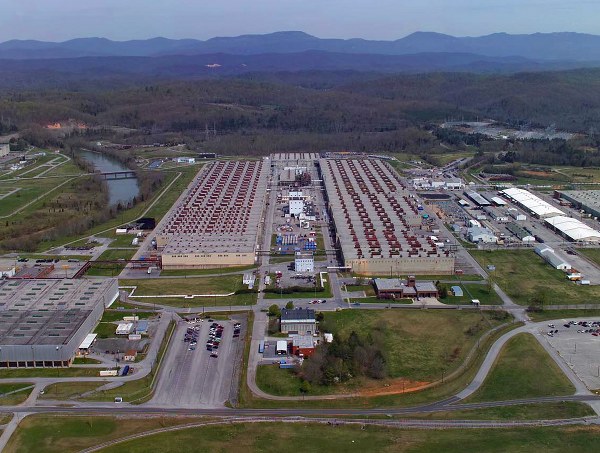
Now demolished, the former mile-long, U-shaped K-25 Building, pictured above, was once used to enrich uranium for atomic weapons and commercial nuclear power plants. Located in west Oak Ridge, the site will become part of a Manhattan Project National Historical Park. (Photo courtesy of U.S. Department of Energy)
Seventeen of the New Mexico properties are owned by Los Alamos National Laboratory, where bomb research took place. Major properties include the V Site and Gun Site, Assembly Building/Quonset Hut, Pond Cabin, and Louis Slotin accident building.
In Hanford, the park will preserve two iconic Manhattan Project properties: the B Reactor and the T Plant, the Atomic Heritage Foundation said.
“The national park is long overdue and will provide Americans an important opportunity to understand the Manhattan Project and its complex legacy for the world today,” said Cynthia C. Kelly, founder and president of the Atomic Heritage Foundation.
The legislation passed by Congress establishes the park no later than one year after enactment. During that time, the U.S. Department of Energy and Department of Interior need to enter an agreement on their roles and responsibilities, the Foundation said.
As the nation’s storyteller, the National Park Service will interpret the Manhattan Project. The Department of Energy will ensure the public access, safety, environmental remediation, and historic preservation of its Manhattan Project properties, the Atomic Heritage Foundation said.

Building 9204-3 at the Y-12 National Security Complex will be among those included in a Manhattan Project National Historical Park. The Beta-3 Calutrons separated the isotopes of uranium for the first atomic bomb and continued to be used for isotope separation for more than 50 years. (Photo courtesy of Y-12 National Security Complex.)
The National Park Service conducted a detailed study, completed in 2011, that included a recommendation by the Secretary of the Interior that a “three-site, one-park†concept was both feasible and warranted to help interpret the Manhattan Project, Oak Ridge officials said.
The city has advocated for the park for many years alongside community organizations including the Oak Ridge Heritage and Preservation Association, the American Museum of Science and Energy Foundation, and the East Tennessee Economic Council.
“The city has also worked diligently with the Los Alamos and Hanford communities through its membership in the Energy Communities Alliance,” Oak Ridge officials said.
The Atomic Heritage Foundation called the effort a “great work of collaboration.” They said Representative Doc Hastings, a Washington Republican who is retiring, played a vital role as chairman of the House Natural Resources Committee, with the support of representatives Ben Ray Lujan, a New Mexico Democrat, and Fleischmann, a Tennessee Republican.
The Foundation said Senator Maria Cantwell, a Washington Democrat, has played a key role for more than 10 years, drafting the legislation in 2003 and vigorously advocating it throughout. In addition, senators Patty Murray, a Washington Democrat; Lamar Alexander and Bob Corker, both Tennessee Republicans; and Tom Udall and Martin Heinrich, both New Mexico Democrats, have all played vital roles.
The new national park will “preserve and protect one of the most historic events in American history,†Alexander said.
The Foundation said champions who have since retired from Congress include former New Mexico Senators Jeff Bingaman and Pete Domenici.
And it would not have been possible “without the enthusiastic support of the three Manhattan Project communities and the Energy Communities Alliance,” the Foundation said. “Also essential has been the dedicated professional staff of the National Parks Conservation Association and National Trust for Historic Preservation.”
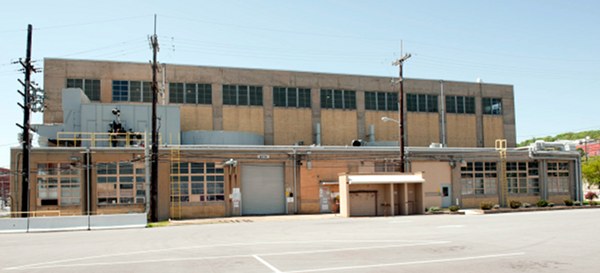
Building 9731 at Y-12 will also be included in the Manhattan Project park. The Manhattan Project was a top-secret federal program to build the world’s first atomic weapons during World War II. The Pilot Plant demonstrated isotope separation techniques. (Photo courtesy Y-12)Â
The National Parks Conservation Association said the parks legislation was the most significant expansion of the National Park System in nearly three decades.
The NPCA said it establishes seven new national park sites, expands nine national park sites, and extends 15 National Heritage Areas, effectively shaking loose a five-year stalemate on public lands measures in Congress. It also authorizes the National Park Service to study Civil War battlefield grounds in Mill Springs, Kentucky; areas related to the Buffalo Soldiers, often considered the original guardians of our national parks; and other important places for future national park consideration.
“This bipartisan legislation represents years of work by community members, business leaders, scientists and the National Parks Conservation Association,” said Clark Bunting, president and chief executive officer of National Parks Conservation Association. “It also represents years of history that deserve to be preserved, and acres of land that deserve to be protected in the name of strengthening our country’s best idea. This legislation clearly demonstrates that Congress and the administration are making national parks a national priority.”
Alexander said the NDAA authorized funding for the Department of Defense on a range of fronts, including:
- providing military pay with a 1 percent across-the-board pay raise for military personnel;
- funding for military construction projects in Tennessee, specifically $41 million at Fort Campbell; and
- preventing another round of military base closures.
“I voted for the National Defense Authorization Act because it is critical to our national security and to ensuring that our men and women in uniform receive the support and resources they need,†Alexander said.
Here is more specific information about the park properties to be preserved at Los Alamos and Hanford:
LOS ALAMOS
The legislation incorporates 17 properties owned by the Los Alamos National Laboratory, where research on the bomb took place. The major properties include:
- the V Site (three properties in TA-16 restored in 2006) where the “Gadget†or plutonium-based implosion device tested at the Trinity Site was assembled,
- the Gun Site (four properties in TA-08 undergoing restoration) used to design and develop the uranium gun-type bomb “Little Boy,â€
- Concrete Bowl (TA-06-0037) built for testing plutonium-based bomb designs and retrieving the plutonium,
- Assembly Building/Quonset Hut (TA-22-1), where the first “Fat Man†bomb was assembled and related implosion and criticality research took place,
- Pond Cabin (TA-18-29), where fission and early implosion research was conducted, and
- the Louis Slotin accident building (TA-18-1), where Slotin received a fatal dose of radiation while conducting a criticality experiment in 1946.
Once the park is established, the Los Alamos National Laboratory should increase public access to these properties consistent with its ongoing mission and national security concerns, the Atomic Heritage Foundation said.
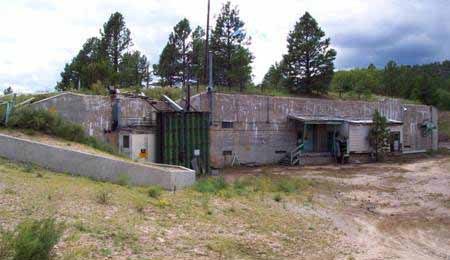
The Gun Site at Los Alamos, which was used to design and develop the uranium gun-type bomb “Little Boy.”
In addition, the new park includes 13 properties in the Los Alamos community. Most of these were originally built by the Los Alamos Ranch School, which was founded in 1917 and taken over by the government in 1943. These include several of the former Masters’ cottages on Bathtub Row, where the top-echelon scientists and military leaders lived; the Baker House, where Sir James Chadwick, head of the British Mission, lived; the Power House, converted for George Kistiakowsky; the Spruce Cottage, where at various times John Manley, Kenneth Bainbridge, Stan Ulam, and Enrico Fermi lived; the Arts and Crafts House, where Norris Bradbury lived; and the Peggy Pond Church Cottage, where Rear Admiral William Sterling “Deak†Parsons lived.
Two cottages will be open to the public, the J. Robert Oppenheimer House and the Hans Bethe House, and could be the “jewels in the crown†of the visitors’ experience, the Foundation said. Visitors are also welcome at the Guest House, now the Los Alamos Historical Society Museum, and the Fuller Lodge, a handsome ponderosa pine structure that was a social center for the Manhattan Project. Other properties included in park are the Ice House Memorial on Ashley Pond, the fire cache near the Ancestral Pueblo site, and a former Manhattan Project dormitory and cafeteria.
HANFORD
The park will preserve two iconic Manhattan Project properties: the B Reactor, the world’s first full-scale plutonium production reactor, and the T Plant, used to separate plutonium from the irradiated fuel rods.
The Tri-City Herald in Kennewick, Washington, reported that the B Reactor was the world’s first full-scale nuclear reactor, built in the Eastern Washington desert along the Columbia River as the U.S. raced to develop a nuclear bomb, fearing that Germany was working on a similar initiative. The reactor produced plutonium for the first nuclear explosion in the New Mexico desert and the bomb dropped on Nagasaki, Japan, helping end the war.
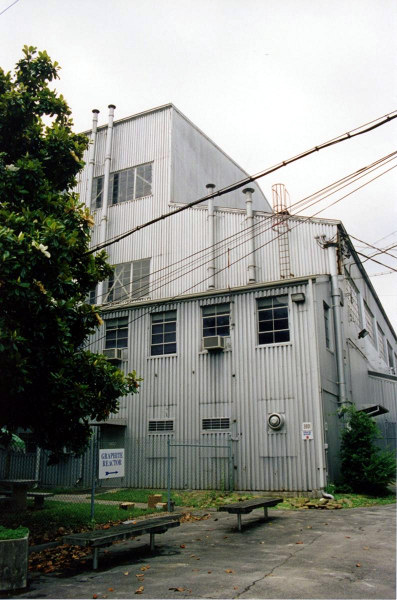
The X-10 Graphite Reactor at Oak Ridge National Laboratory. The reactor served as a pilot facility for the plutonium production reactors at Hanford. (Photo courtesy Atomic Heritage Foundation)
The B Reactor, along with eight Hanford reactors that followed, continued to produce plutonium for the Cold War.
In addition, four pre-World War II properties will be preserved: the Hanford high school, White Bluffs bank, an agricultural warehouse owned by the Bruggemann family, and the Hanford irrigation district pump house. With these properties, the stories of the pioneering agricultural families as well as the Native Americans who lived, hunted and fished in the Columbia River can be told, the Atomic Heritage Foundation said.
At each site, visitors will be able to experience where the work actually took place and where people lived—in tents, huts, trailers, barracks, and dormitories, or for the lucky ones, houses.
In the communities of Richland, Washington, and Oak Ridge, hundreds of “Alphabet†houses built from the same blueprints (e.g., called “A,†“B,†and “C,†etc.) have been home for families for more than seven decades. While most of the wartime apartments and other housing at Los Alamos were torn down, visitors can walk down Bathtub Row, visit the house where J. Robert Oppenheimer and his family lived, as well as see a cafeteria and dormitory from the Manhattan Project.
More information will be added as it becomes available.

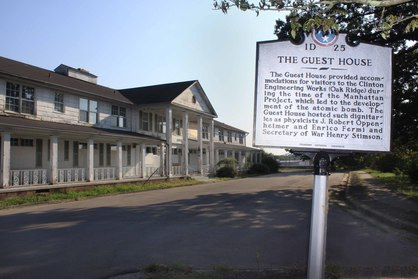



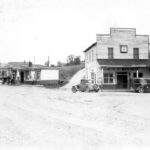


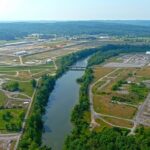


Mark Harvey says
JohnDawn – thanks for the very detailed summary!
johnhuotari says
You’re welcome, Mark. I was pleased to be able to publish a list of the properties included in the park.